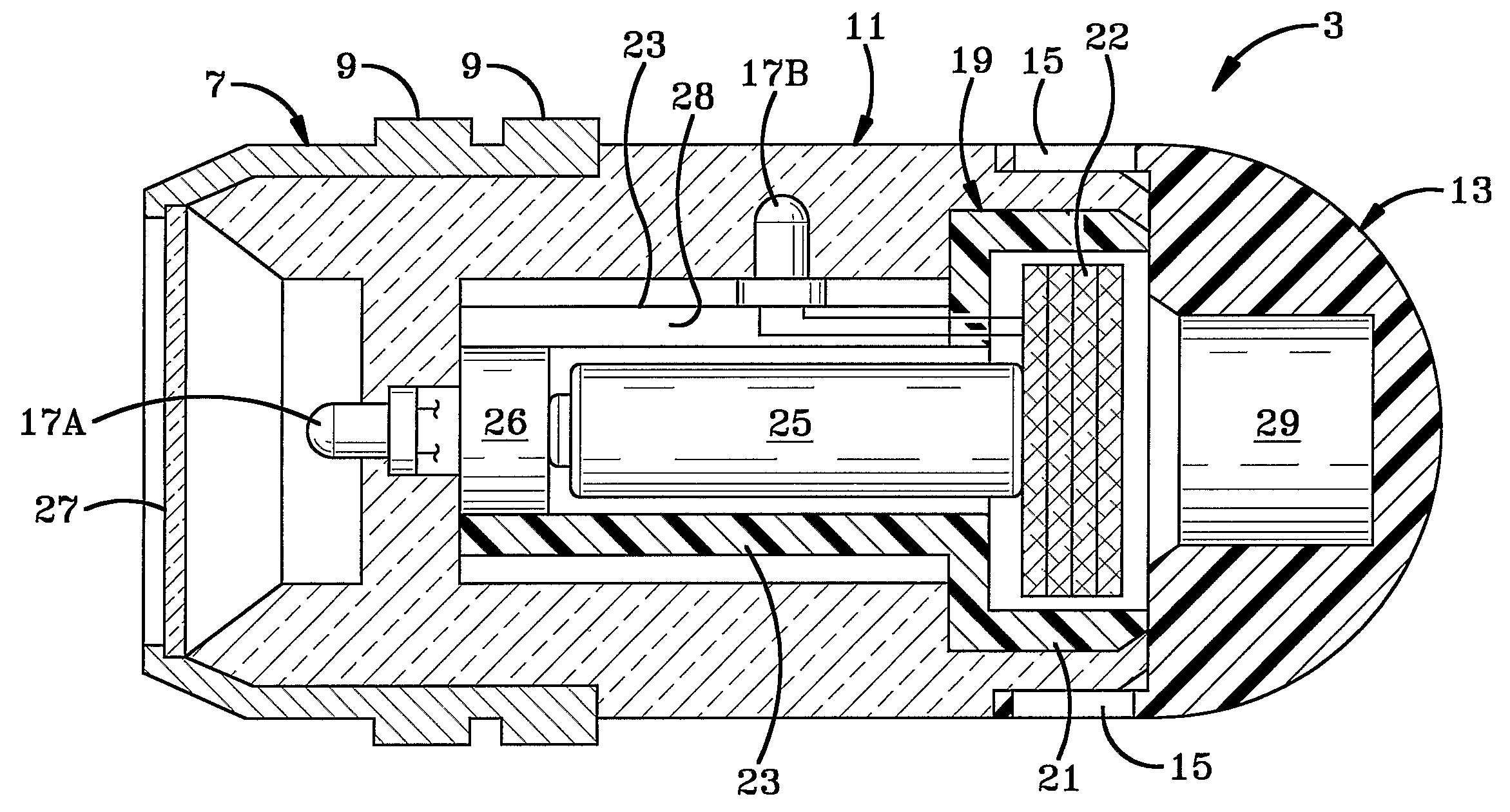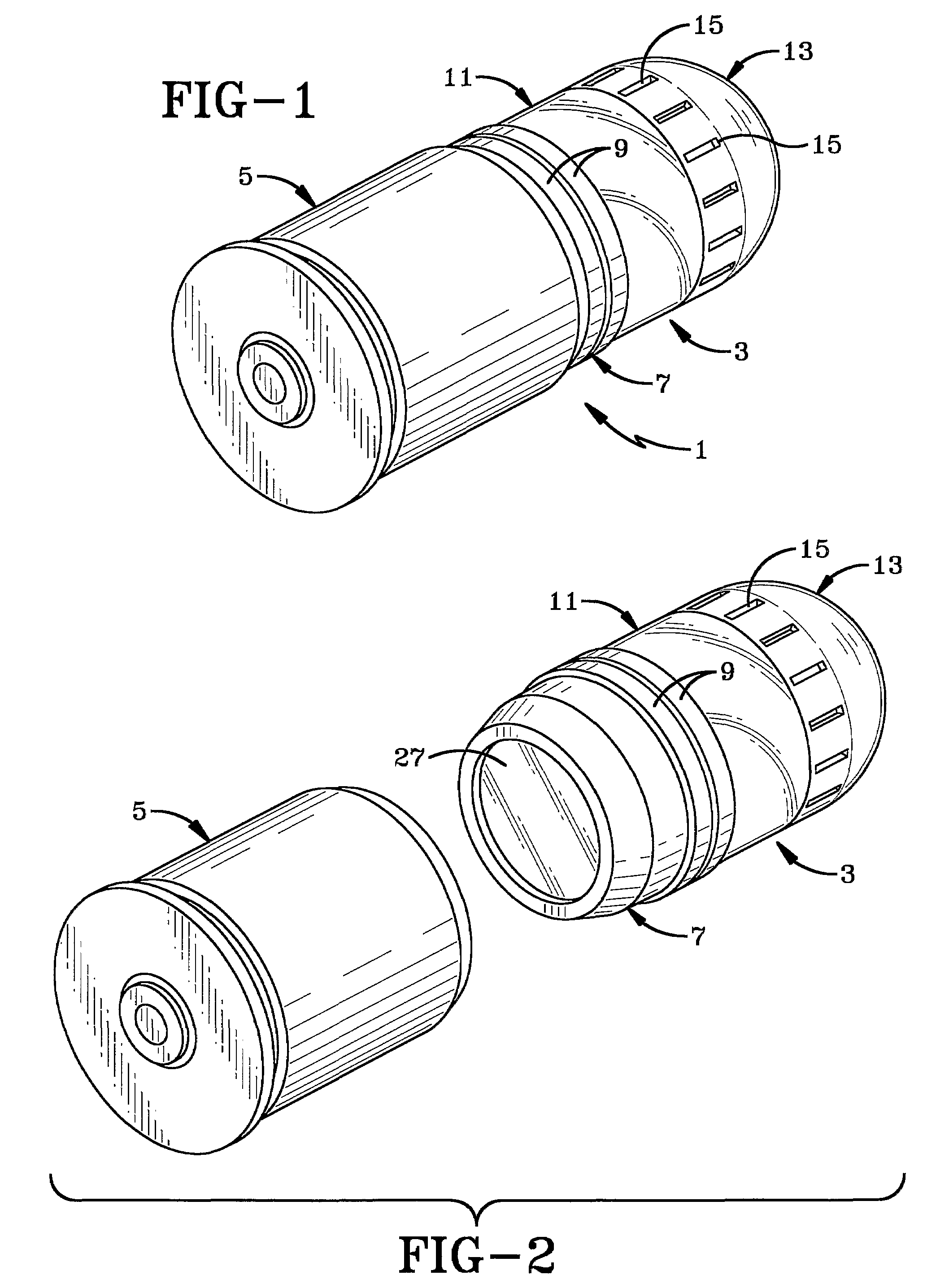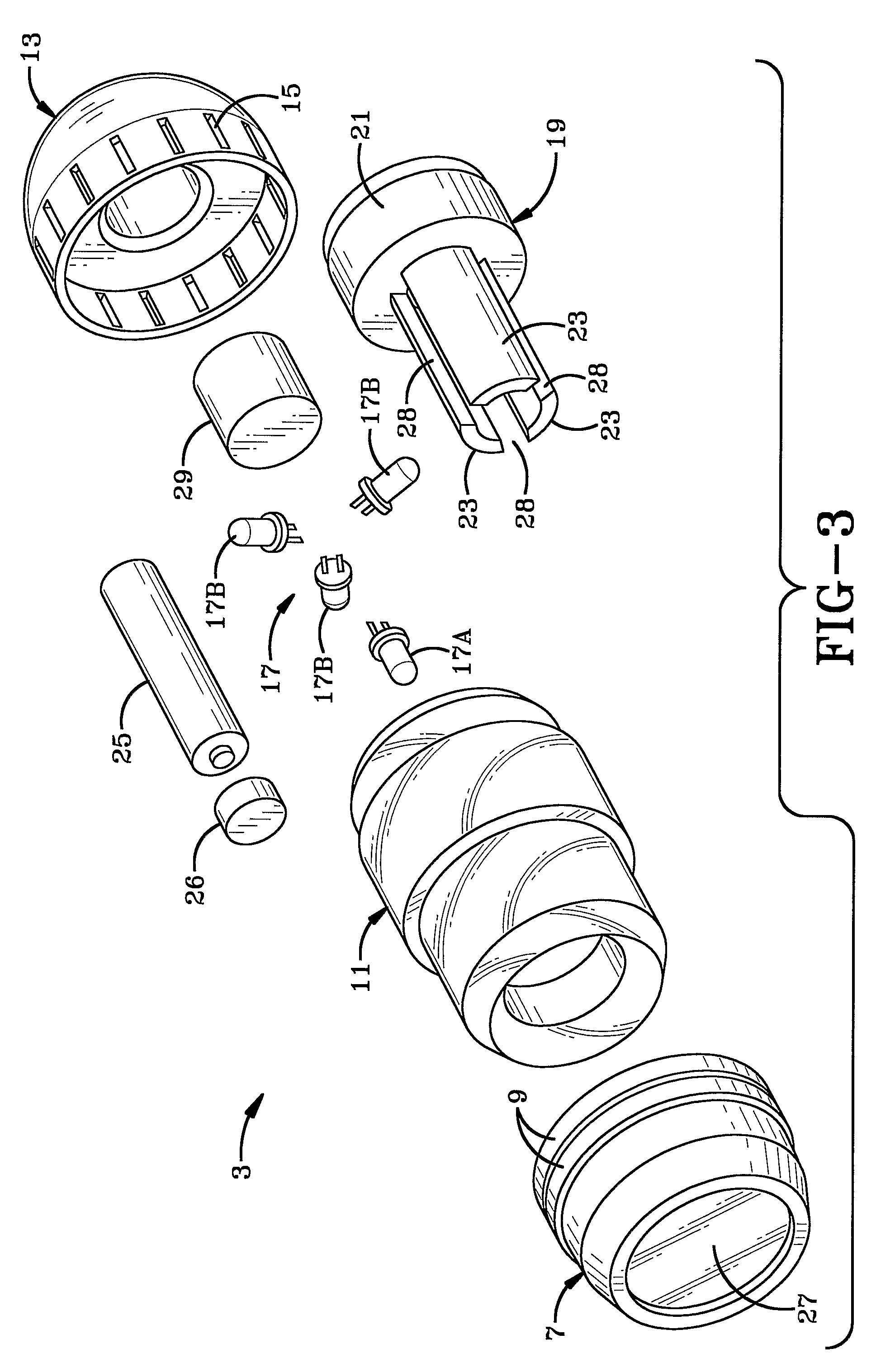Radiation homing tag
a homing tag and radio frequency technology, applied in the field of armaments, can solve the problems of inability to provide ground combat units with platforms and delivery systems, inaccurate direct-fire rifles, and expensive vehicular platforms, and achieve the effect of increasing the munitions rang
- Summary
- Abstract
- Description
- Claims
- Application Information
AI Technical Summary
Benefits of technology
Problems solved by technology
Method used
Image
Examples
Embodiment Construction
[0028]The optical version of a homing tag which is the preferred embodiment of the present invention is indicated generally at 1, and is intended to be placed near or on a target position, in one instance as a 40 mm grenade as shown in FIG. 1. Optical homing tag 1 includes a transmissive housing indicated generally at 3, which is attached to a cartridge case 5, which contains an impulse charge for propelling the optical housing to a target. The housing includes an aft body 7 to provide an interface with the cartridge case 5, typically by a crimp joint. Rotating bands 9 are located at a leading edge of aft body 7 which enables the optical housing to engage the riflings of a barrel when used with certain types of launch equipment, providing an aerodynamic spin to the housing as it leaves the barrel of the launcher to ensure proper flight dynamics. The boat tail design of aft body 7 as shown in FIG. 3, minimizes aerodynamic drag as the optical housing moves through the air toward a tar...
PUM
 Login to View More
Login to View More Abstract
Description
Claims
Application Information
 Login to View More
Login to View More - R&D
- Intellectual Property
- Life Sciences
- Materials
- Tech Scout
- Unparalleled Data Quality
- Higher Quality Content
- 60% Fewer Hallucinations
Browse by: Latest US Patents, China's latest patents, Technical Efficacy Thesaurus, Application Domain, Technology Topic, Popular Technical Reports.
© 2025 PatSnap. All rights reserved.Legal|Privacy policy|Modern Slavery Act Transparency Statement|Sitemap|About US| Contact US: help@patsnap.com



